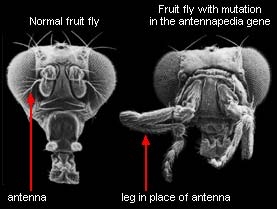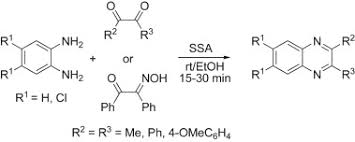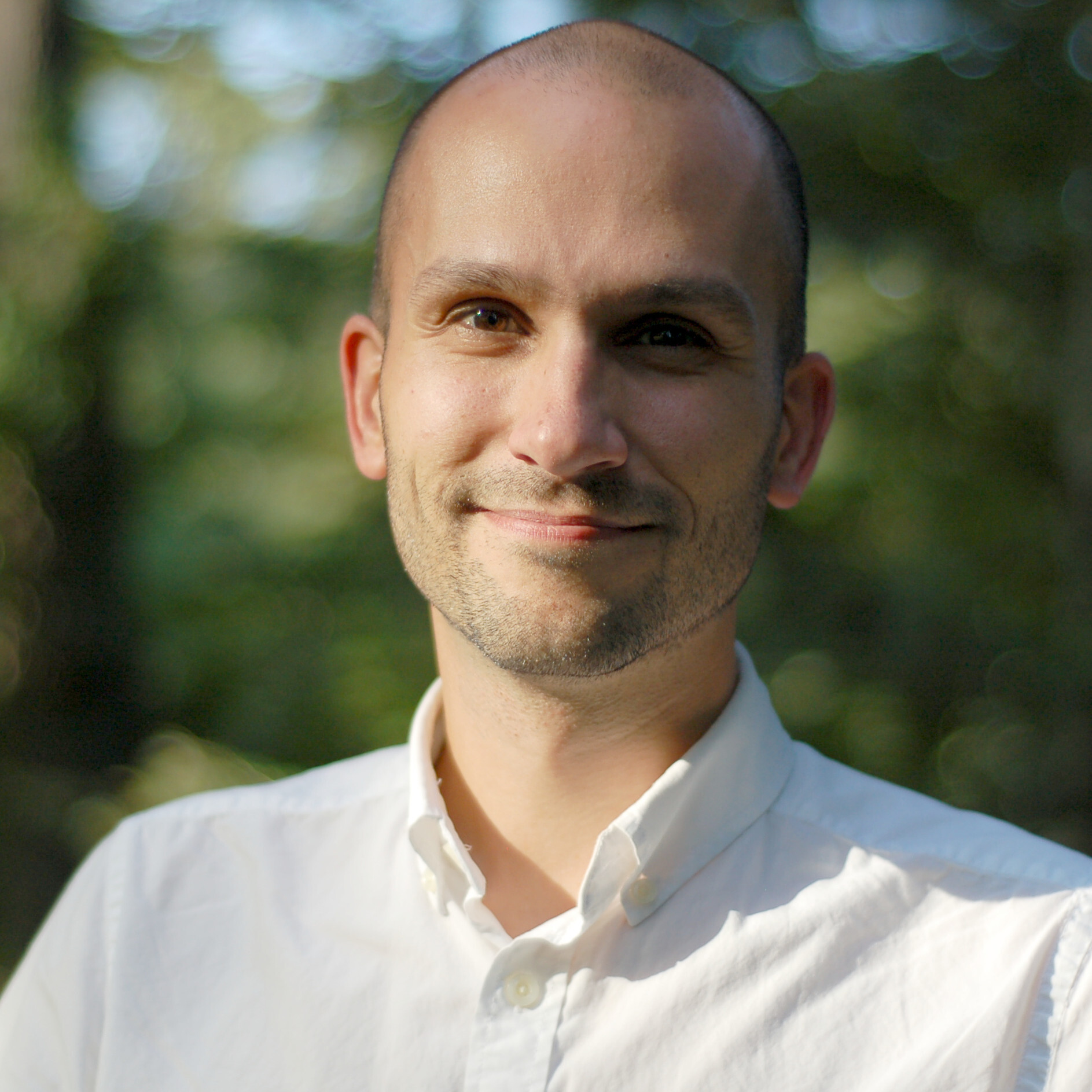I know that DNA encodes proteins. Truthfully, everything besides that (including ‘what are proteins’) mostly wooshes over my head, but that’s not relevant because whenever I search this question I never even find it addressed anywhere.
The human body has, among other things, two hands each with five fingers, with a very particular bone structure. How are things like that encoded in DNA, and by what mechanisms does that DNA cause these features to be built the way they are? What makes two people have a different nose shape? Nearly everyone in my family has a mole on the left side of their face, how does that come about from DNA?
I’m sure there are many steps involved, but I don’t see how we go from creating proteins to reproducibly building a full organism with all the organs in the right places and the right shapes. Whenever I try to look this up, all of these intermediate steps are missing, so it basically seems like magic.
As I said, any explanation will most likely go over my head and I won’t be able to understand it fully, but I at least want to see an explanation. I’ll do my best to understand it of course.
I recently had a course in developmental biology and this is what I can remember the best:
From the moment of fertilization, the egg has a ‘polarity’, thus a direction like up and down, left and right etc. This can be established by e.g. the entry point of the sperm or protein produced by the mother in one side of the egg. From here on out protein gradients and interactions on cell membranes specify where cells are and thus what kind of tissue they should become
This early polarity leads to a certain pattern of cell division. An important part of this is the folding in of tissue layers called gastrulation, creating the beginning for the gastrointestinal tract.
In vertebrates a streak starts to form in the embryo. This is the start of the vertebrae and the neural tube in it. Also blocks of cells called somites start to form. These blocks are very important for all kinds of tissues in the body.
Hox genes make the cells in somites get an identity like head, arm etc. So in the end Hox genes are probably what you are looking for. If leg Hox genes are expressed where fruitfly normally have antennae, you get this horror:

So in the end Hox genes are probably what you are looking for.
Thank you! I will read up on that.
If leg Hox genes are expressed where fruitfly normally have antennae, you get this horror:
So, a core part of my question is what causes certain genes to be expressed in certain places in the body, and specifically how this comes about from genetics alone (i.e. not artificially in lab experiments). In my past searches I did find some info about forcing gene expression in places where it wouldn’t normally happen, which creates horrors similar to the one you shared, but I never found an answer for how this is controlled in natural development. Hox genes seem to be the answer I’m looking for :)
Here’s a fantastic and entertaining short video on how it works: https://youtu.be/ydqReeTV_vk?si=AyKJPZIzwaSCvZxv
Huh… it never ceases to amaze me how many quite large channels that I would absolutely enjoy, like this, are not recommended to me. Even though I watch content very similar and live on YT.
Thanks for sharing.
How is this so good hole crap
I have no idea, he operates on his own level. All of his videos are top quality.
I would start by looking at plant genetics, if you think about it they; are simpler to understand, they never stop growing (expressing those genes), are much less specialized (cells cannot just be told that they are certain organs because of their surrounding cells, if a root penetrates the surface it no longer needs to be a root right?) actually has more factors in deciding how to specialize (animal cells only need to orient themselves up once, plants cells are constantly orienting themselves, both against gravity, and the wind, and sometimes in response to other plants, these things all have generic controls).
Plant biology is a great stepping stone to a lot of what you’re looking for.
DNA is like the secret recipe at KFC (except it has 40 spices with names for 64, but quite a few of those names are homonyms for the same spice, and 3 of those spices aren’t spices but instructions for when to stop adding spices), with a, millions of peoples rely on it, from cashier’s and cooks, to janitors franchisees, CEOs and builders, some of these are more hands on with the recipe, while others are way down the line, but none of them have ever seen the recipe first hand. The DNA is kept from harm by being hidden away where only DNA readers and multipliers have access to it, everything that is produced by the DNA gets (this metaphor is so tortured) broken down into what spices are needed in which order, the spice mixers and bakers are pretty damn familiar with the instructions, those would be RNA and proteins, but just because they get good instructions doesn’t mean they’re free from outside influence, they’re outside of the vault after all.
By the way, in case you’d have a guess for the answer:
If scientists really wanted to, throwing all questions of ethics out the window, would it be possible to genetically engineer a person with four arms instead of two, kinda like Goro? Does our current understanding of this go far enough to make deliberate changes like that? And would that baby be able to develop in a normal woman’s pregnancy?
No, and no. My PhD thesis was on gene delivery. We’re barely getting into the simplest modifications for disease treatment. Multigene stuff, and spatiotemporal control is still a ways off.
I would say sort of. They could do it, but the result wouldn’t survive very long. Probably not even to birth.
I’d guess no, the number of digits and limbs is conserved very well across tetrapods (it’s in their name after all). Fucking with the amount of limbs will probably lead to some developmental errors in the early embryo.
This is pretty much the underpinning question of the entire field of evolutionary developmental biology, so naturally any answer is going to be a bit surface level, and I get out of my depth fairly rapidly to be honest. Still, it is quite interesting.
One of the central ideas is that as an embryo grows, its cells go from being all equivalent multipotent stem cells into being different from each other - at first more specialized types of stem cell that can only turn into certain tissues and gradually specializing more and more. Since these cells are differentiated and expressing different genes from one another, they can then start to co-ordinate with each other using chemical markers and gradients of concentration of those markers across space to regulate what types of cells should be growing/dividing, where in the embryo they should be doing it and at what time they should be doing it.
That signaling is in turn controlled by some often complicated networks of regulatory genes - ones which when they are expressed make proteins that selectively attach to other bits of the DNA in that cell and make the genes there more or less likely to be expressed themselves. A lot of evolutionary variation is actually focused on these regulatory systems rather than on the genes which they are switching on and off.
So to my knowledge, something like nose shape likely comes down to some of those regulatory genes controlling where the cells that will eventually be forming the cartilage get placed relative to the skull etc.
I’ll focus on a side question, that I’m more prepared to answer.
Truthfully, everything besides that (including ‘what are proteins’) mostly wooshes over my head
At the end of the day, proteins are biiiiig arse molecules. Mostly composed of carbon, hydrogen, oxygen, and nitrogen. For example, here’s a protein called “myoglobin”, that carries oxygen within your blood:

Blue = nitrogen, red = oxygen, grey = carbon, white = hydrogen, salmon = iron, yellow = sulphur. Disregard the mix of sticks and balls in the model, they’re both representing atoms.
If you pay close attention to the model, you’ll notice a repetitive pattern: 1) nitrogen, 2) carbon connected to some large junk, 3) carbon connected to a “dangling” oxygen. That is not just in the myoglobin, but in all proteins.
If you flattened that pattern and removed the hydrogens (to simplify it), you’d get something like this:

That happens because the bodies of living beings don’t build those huge molecules out of nowhere; they do it with smaller molecules called “aminoacids”. That pattern there is the amide group, you could see it as the “solder” between aminoacids.
Here’s the representation of a few “free” aminoacids:

The fun part is that R, the “side chain”. I called it “junk” but it’s actually a big deal - because it’s what gives each protein a different shape and property. For example, it’s thanks to that junk that the myoglobin has a specific shape, that forms a “ring” of nitrogens, just at the right size to host an iron cation, but still leaves one of the sides of the iron cation free - so it could connect to something else. (Hopefully diatomic oxygen. As in, it’s how myoglobin transports that oxygen within your body. But if you get poisoned with carbon monoxide or cyanide, it gets stuck there, and it’s hard to take it off so the protein stops transporting oxygen.)
The R side chains are not referred to as radicals. R- is common in organic chemistry and refers to a part of a molecule not shown for some reason. Generally because it’s not the focus in the specific figure. Generally you’ll have a R = (whatever combination of atoms) defined below.
Radicals are a specific atom with an unpaired valence electron. Sometimes also called “free radicals”.
Edit, here’s an example of a non-amino acid use of R:

Fixed - thanks for pointing this out. My brain farted the word out of nowhere, the correct term in this context would be “side chain”.
I’m aware of the usage of R in org chem.
Sorry, I hope I didn’t come off as condescending or anything. Getting thoughts into words is difficult sometimes haha. But I just take any chance I can (there’s not too many) to talk about chemistry.
Your original post explained everything very well, thanks for contributing.
Don’t worry, you didn’t sound condescending - you went straight for the issue, and then added further info.
Completely off-topic: I’m curious on your example. Most benzopyrazine synthesis routes that I’ve seen use IBX instead of SSA. Is this a recent development?
For example, here’s a protein called “myoglobin”, that carries oxygen within your blood:
Myoglobin is in the muscles. Hemogoblin is in the blood and is essentially 4 myoglobin molecules that can combine into one hemoglobin. IIRC, the combination of the 4 makes it easier to switch between accepting and donating oxygen, where myoglobin is better just at the taking oxygen.
Good question. Might do better in a dedicated science community though. Also might just get answered with links to textbooks, since the actual explanation, to get to full understanding, is probably at least a years worth course of study that cannot be easily summarized. It likely involves a whole bunch of different individual chemical interactions, starting with “how proteins make structures”.
Not everything is summarizable, unfortunately.
There are a lot of missing steps people don’t really understand yet R.E. how this all amounts to something complicated like “a liver”. But we think that the basic building block of it is that there are gradients of chemical concentration that some cells set up, and then other cells react to the level of the chemical and decide to different things. There’s a famous analogy of the French Flag Model, where the different stripes of the French flag are imagined to emerge from how far you are from the left edge where a “morphogen” chemical is coming from, because cells detect and react to different concentrations of the chemical in different ways.
And the cells do these things because the DNA programs them to do it. Some genes produce proteins that can turn around and bind to the DNA that encodes other genes, and make those other genes produce more or fewer proteins of their own. Proteins can be made so that they bind or unbind DNA in the presence of other proteins, or particular chemicals, or which can function to turn one chemical into another. So you can have little logic circuits made out of genes that measure chemicals and turn other genes on and off. And you can have little memory circuits based on which genes have things bound to them and which ones are currently on or off, so the cells can remember what it is they decided to be. And so the cells are programmed to differentiate into progressively more specific cell types over time depending on what signals they see, with the morphogen gradients or combinations of them allowing the cells to have some idea of where they are in the body.
And the proteins are these little squishy clicky things, like long strings of magnets that will snap into certain shapes, or that can swap between a few shapes. They can be shaped so they fit really nicely against certain shapes of DNA sequence or other proteins, or so that they fit really nicely against small molecules with a piece pushing on the molecule in just the right place to make it easy for an atom to break off the end of it or whatever. And because they live in this weird tiny world where everything is constantly vibrating around and banging against everything else (because of how tiny the volumes get when you shrink the lengths to cell size), this is enough for them to find and stick to the stuff they are shaped to stick to.
Then depending on genetic variation between people, the proteins involved can e.g. have different set points for the concentrations they react to, and that can translate into the threshold between cells deciding to do one thing or another moving around in the body, and in turn translate into people having e.g. a wider or narrower region of their face decide to be a nose.
Richard Dawkins has an entire chapter on this exact topic in his book “The Greatest Show on Earth”. I highly recommend reading it, even just that one chapter! It doesn’t feel like a text book, and his writing is very easy to follow in my opinion.
It’s chapter 8, “You did it yourself in 9 months”. To summarize, many people mistakenly think of genes as a “blueprint”, but he suggests it’s better to think of genes as instructions for origami paper folding. Genes don’t know the whole creature, they just know what to fold next, what to duplicate, what to bend, and so on, kind of like that. It’s been a while since I read it. 😅
But I do remember, humans are so complex, we may never fully understand the complete embryo-to-adult growth process, BUT the author points out that there IS a creature, a very small worm, that we are able to understand everything.
That may not seem like a big deal at first, but think about it. Scientists understand the complete growth process of a living creature, from a single cell, every gene, every cell, everything, up to when it’s fully formed. So cool.
I think we will eventually understand it. It’s down to having enough processing power. We’re nowhere close to it, though.
I might have to read that. Thank you.
Like you said, there’s a metric ton of steps involved in the overall process, and our understanding of each of these ‘levels’ of organization varies quite a bit. Closest to my personal expertise is the sub-cellular and cellular level, for which I would refer you books or papers in developmental biology, developmental genetics, and epigenetics. I can give you a couple bloopers to get you excited though:
When it comes to deciding where different organs will form (again, from a sub-cellular level), it essentially starts from a concentration gradient of certain proteins/chemicals inside the zygotic cell. This gradient then determines the level of activation of other proteins, each level then leading to different biochemical cascades which, once more cells have formed from the zygote, determine which organ systems will come from them. Messing around with this concentration gradient can, thus, dramatically affect an organism’s development, leading to, for example, a body with just ‘left’ organs on both halves, just ‘top’ organs on both halves, missing an entire organ system (like circulatory system and heart) and so on.
A more or less similar process occurs to determine the shape of organs. As a simple example, when some animals with regenerative capabilities (like axolotls) lose a limb, they are able to regrow the limb to the exact same length as before. Turns out, each cell on the periphery of their limb has a certain concentration of receptor proteins on its surface, which acts as a molecular ‘signature’ of that cell’s position in the limb. These signatures provide information on how far to grow the limb for regeneration, and some chemicals, lile retinol, can even override these signatures and fool the organism’s body into regrowing the limb from scratch on top of the place of regeneration.
I hope these examples give you an introduction to the mechanisms involved. There’s obviously a lot more involved, so I would again highly recommend textbooks and research papers if you’re interested.
Genes!
We all start as a single cell that gets fertilized by a sperm. That single cell creates a copy of itself to become 2 cells. The 2 do the same to become 4, 4 become 8, and so on. At a certain point, you have enough cells to start differentiating and giving the cells a “job”. Your cells know where they are in your body by communicating with the cells around it, and that influences what job the cell should have.
Genes are a sequence of DNA, and certain genes serve as a “recipe” for proteins which do a lot of important work in the cell. The cell’s job determines which genes are used and therefore which proteins are made. The genes provide the information needed for the cells to form a certain way (look like a nose) and function a certain way (behave like a nose) and proteins help facilitate that.
Two people have different noses because they have different genes (different instructions for how it should look). Your family has a mole on the left side of their face because that gene continues to be passed down with each generation and instructing the cells in the face to form a mole.
I tried to simplify as much as I could without losing the integrity of the information. I hope this makes sense and is helpful!
deleted by creator
https://youtu.be/ydqReeTV_vk?si=ZvLCP_YhY-OsB_Zs General overview in an entertaining wrapping
This was posted a few hours before your comment by a user named neuropean. It’s absolutely amazing!
A good introductory explanation: https://coldbloodedscience.com/the-art-of-shape/




